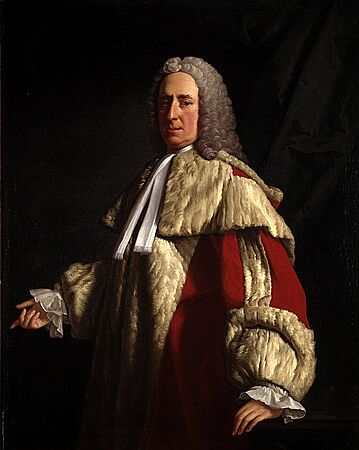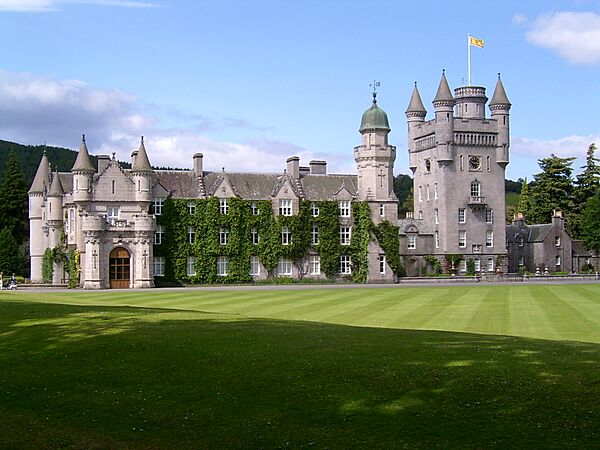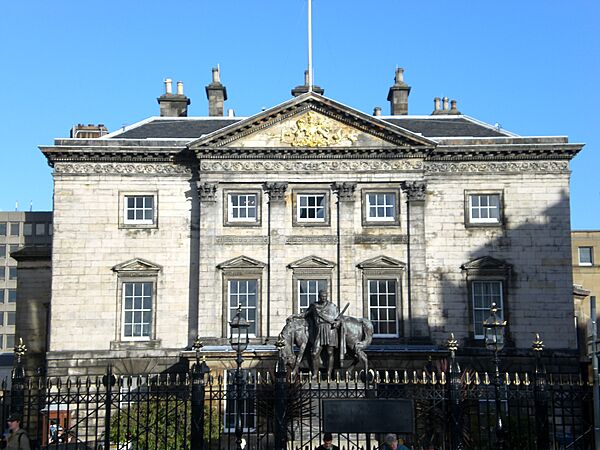The Royal Bank of Scotland £100 note facts for kids
| (United Kingdom) | |
|---|---|
| Value | £100 sterling |
| Security features | Raised print, metallic thread, watermark, microlettering, see-through registration device, UV feature |
| Paper type | Cotton |
| Years of printing | 1727–present 1987–present (current design) |
| Obverse | |
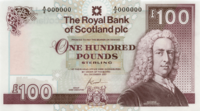 |
|
| Design | Lord Ilay |
| Design date | 1987 |
| Reverse | |
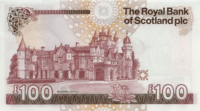 |
|
| Design | Balmoral Castle |
| Design date | 1987 |
The Royal Bank of Scotland £100 note is a special piece of paper money from the United Kingdom. It's the biggest value banknote made by The Royal Bank of Scotland. This note is made of cotton and was first printed in 1987. On the front, you'll see a picture of Lord Ilay. He was one of the people who helped start the bank. On the back, there's a picture of Balmoral Castle.
Contents
What is the £100 Note?
The £100 note is a type of sterling banknote. This means it's part of the money used in the UK. It's the largest amount of money you can get on a single note from The Royal Bank of Scotland. Even though Scottish banknotes are not officially "legal tender" everywhere in Scotland, they are still real money. People generally accept them across the whole United Kingdom. This is because they are fully backed, just like notes from the Bank of England.
How Has the £100 Note Changed Over Time?
The Royal Bank of Scotland started making £100 notes way back in 1727. This was the same year the bank itself began! The very first notes were simple. They were only one color and had printing on just one side. Over the years, laws were made to control how Scottish banks printed money. These laws helped make sure the money was safe and reliable.
The design we see today, called the "Ilay series," first came out in 1987. These notes feature Lord Ilay on the front. He was the first governor of the bank. You can even see his image as a hidden watermark when you hold the note up to the light!
What Pictures Are on the £100 Note?
Besides Lord Ilay, the note has other cool designs. You'll find the bank's special symbol, called its coat of arms. There's also a picture of Dundas House, which is the bank's main building in Edinburgh. Look closely, and you might see a pattern that looks like the ceiling inside the bank's main hall.
All the notes in the Ilay series have a picture of a castle on the back. On the £100 note, that castle is Balmoral Castle. It's a famous place in Scotland.
Designs of the £100 Note
Here's a quick look at the current £100 note design:
| Note | First issued | Colour | Size | Design | Additional information |
|---|---|---|---|---|---|
| Ilay | 1987 | Crimson | 169 × 95 mm | Front: Lord Ilay; Back: Balmoral Castle |
Images for kids
- Design elements on the Ilay Series £100 note


